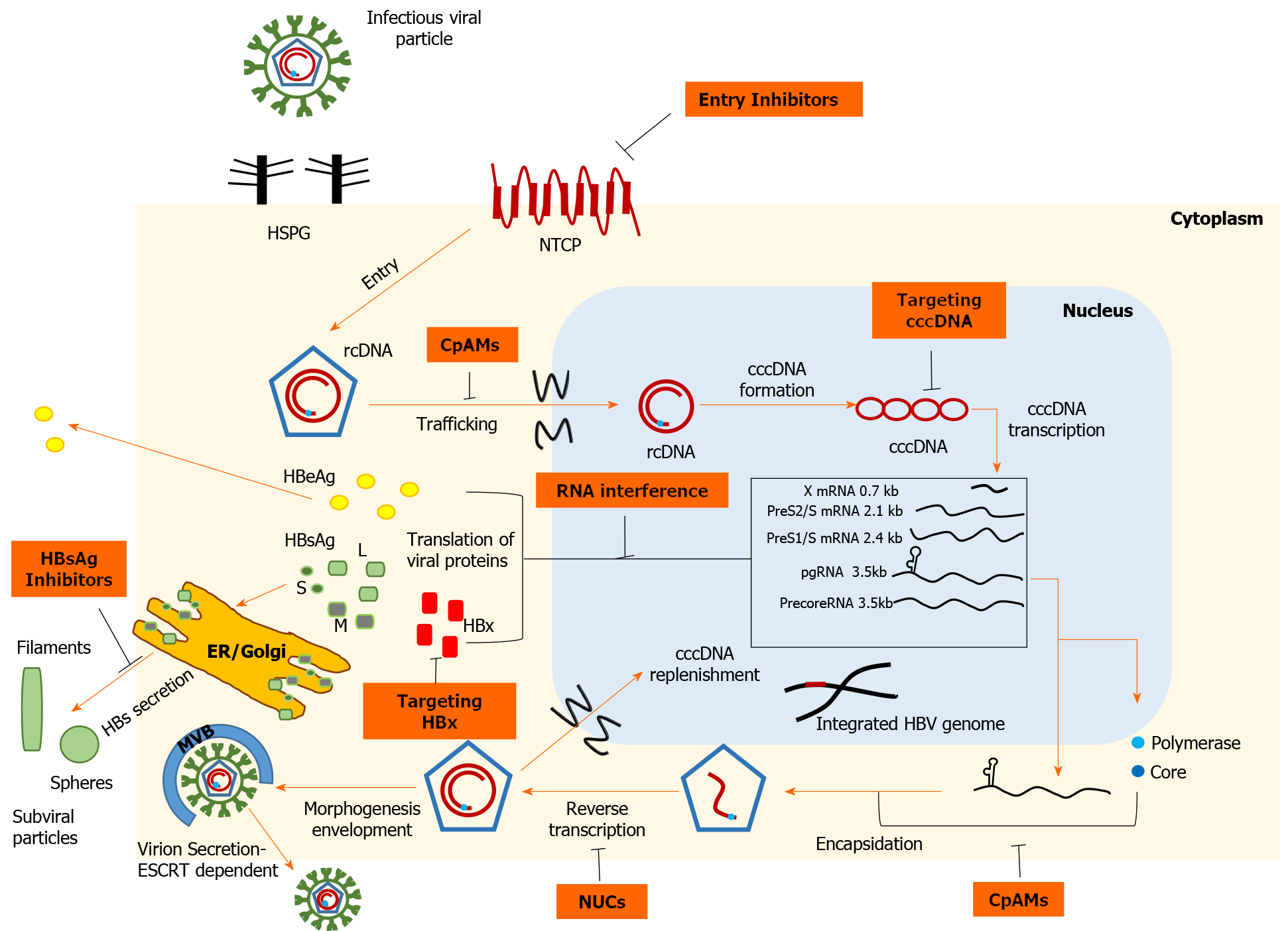Copyright
©The Author(s) 2021.
World J Gastroenterol. Jun 7, 2021; 27(21): 2727-2757
Published online Jun 7, 2021. doi: 10.3748/wjg.v27.i21.2727
Published online Jun 7, 2021. doi: 10.3748/wjg.v27.i21.2727
Figure 1 Schematic representation of the hepatitis B virus life cycle and the targets of direct-acting antivirals.
Viral entry can be prevented, either by disrupting viral interaction with heparan sulfate proteoglycans or by inhibiting high-affinity binding to the sodium taurocholate cotransporting polypeptide receptor. Strategies targeting covalently closed circular DNA (cccDNA) include: Prevention of cccDNA formation, cccDNA degradation or destabilization, gene editing tools to cause sequence-specific damage, and epigenetic manipulations to functionally silence cccDNA. Inhibition of the interplay between hepatitis B virus (HBV) X protein and host proteins leads to transcriptional silencing. Therapeutics based on RNA interference target viral transcripts and block HBV protein expression. Nucleoside or nucleotide drugs are approved inhibitors of reverse transcriptase. Core protein allosteric modulators interfere with the kinetics of nucleocapsid assembly/disassembly and can affect the various functions of the core protein. Hepatitis B surface antigen (HBsAg) release inhibitors limit the circulating HBsAg load. cccDNA: Covalently closed circular DNA; CpAMs: Core protein allosteric modulators; ER: Endoplasmic reticulum; ESCRT: Endosomal sorting complexes required for transport; HBeAg: Hepatitis B e antigen; HBsAg: Hepatitis B surface antigen; HBV: Hepatitis B virus; HBx: Hepatitis B virus X protein; HSPG: Heparan sulfate proteoglycans; NTCP: Sodium taurocholate cotransporting polypeptide; NUCs: Nucleot(s)ide analogues; rcDNA: Relaxed circular DNA.
- Citation: Tsounis EP, Tourkochristou E, Mouzaki A, Triantos C. Toward a new era of hepatitis B virus therapeutics: The pursuit of a functional cure. World J Gastroenterol 2021; 27(21): 2727-2757
- URL: https://www.wjgnet.com/1007-9327/full/v27/i21/2727.htm
- DOI: https://dx.doi.org/10.3748/wjg.v27.i21.2727









